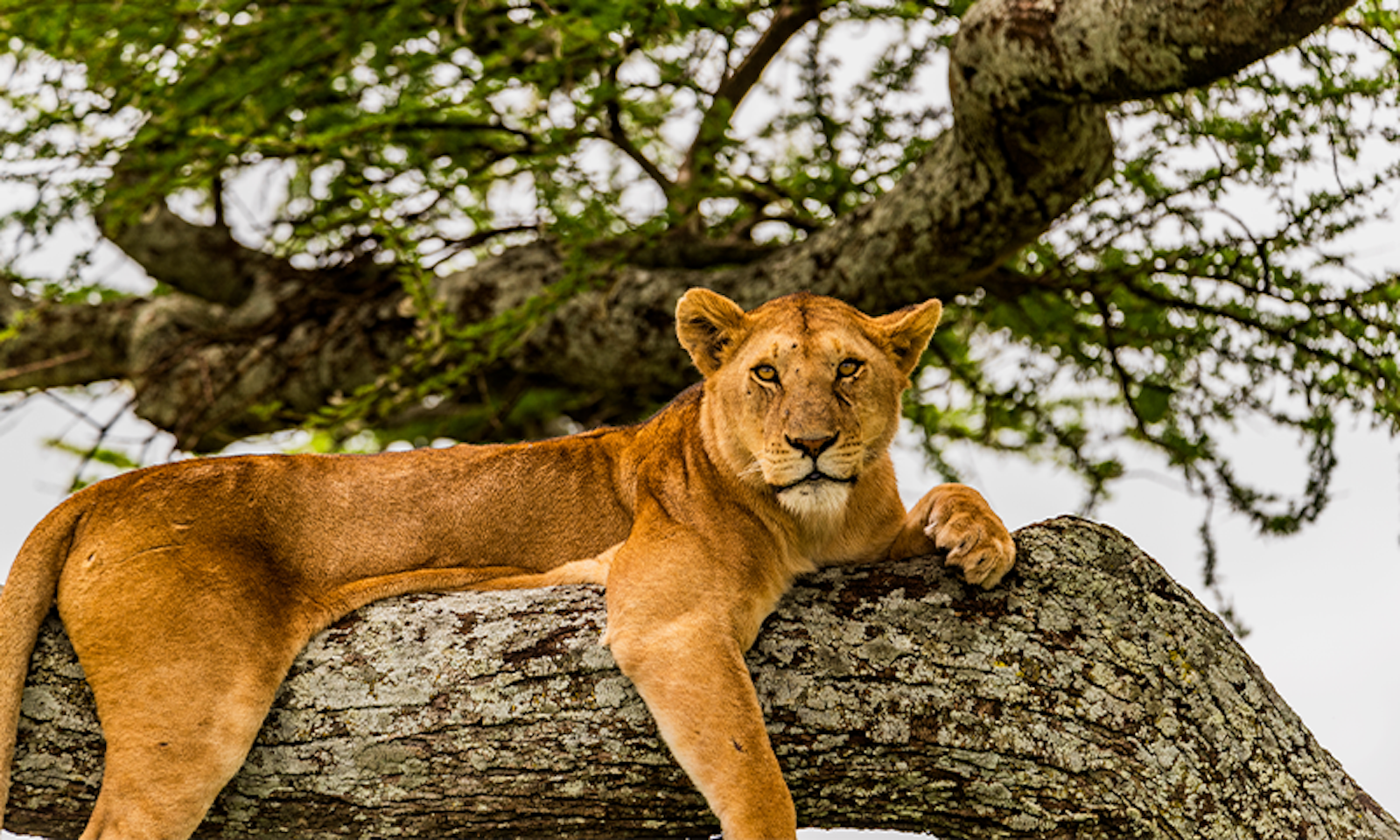Few animals are more synonymous with the African savannah than the lion. With its muscular stride and ferocious roar, it has long been a symbol of strength, courage, and nobility. As an apex predator, it sits at the top of the food chain—the only real predator it must fear is the human. But recently, one of the savannah’s tiniest inhabitants, one that is barely visible, has fundamentally reshaped the fortunes of the lion, as well as those of a number of other magnificent beasts: zebras, elephants, and buffalo.
This real-life fable begins with the iconic umbrella-shaped acacia tree, also known as the whistling thorn tree. Graceful and resilient, the acacia tree dominates the savannah landscape and often provides most of the tree cover for thousands of square miles. Hidden in the branches of this tree are great numbers of tiny acacia ants, which make their home there and act as protectors. With their painful stings and bites, the ants ward off large herbivores such as elephants and giraffes, and allow the trees to thrive.
But lately, the trees have come under the growing influence of a globe-trotting intruder: the big-headed ant. Named for its large heart-shaped head and thought to have originated on the island nation of Mauritius, this aggressive ant has quickly spread across the savannah over the past 20 years, outnumbering and, in some places, eradicating the acacia ant.
In areas invaded by the ants, the lions changed their diets.
Here’s where the lion comes in. As an ambush predator, the lion is heavily reliant on the cover provided by the acacia trees. The trees’ branches and foliage serve as a hiding place from which the lion can sneak up on its favored prey, the zebra. Without the acacia ant, the acacia trees are susceptible to hungry passersby. When elephants extract the nutrients in the bark and roots with their trunks, the acacia trees are stripped and often left broken. As more and more of these trees are consumed, the landscape has radically changed, becoming open and bare.
Conservationists, noticing the change in tree cover, have worried lions might struggle to capture their prey and feed themselves and begin to die. With nowhere to hide, how would they get their dinner?
Recently, an international team of biologists set out to answer this question. They collected data about ant invasions; tree cover; zebra, elephant, and giraffe populations; and the behavior of lions and their prey across the 300-square-kilometer Ol Pejeta Conservancy in northern Kenya. What they found surprised them, says Douglas Kamaru, a University of Wyoming Ph.D. student and the lead author of a new paper about their study.
Kamaru and his colleagues expected lions to starve and their populations to shrink, but that’s not what happened. “The lion population was stable,” says Kamaru. In areas invaded by big-headed ants, the lions simply changed their diets, swapping out zebras for African buffalo. The buffalo aren’t as skittish as the zebras, so the lions are less reliant on stealth and surprise.
In 2020, zebra kill occurrence was nearly three times lower in areas invaded by big-headed ants. Zebras also accounted for less than half of total prey kills that year, down from about two-thirds in 2003, while buffalo accounted for 42 percent of all prey kills, up from zero. These changes were unrelated to zebra or buffalo densities, which remained unchanged from 2014 to 2020.
But it’s unclear whether the shift from zebra to buffalo can endure. “Going forward, I don’t know what’s going to happen,” says Kamaru. “Hunting buffalo is hard work, and buffalo are aggressive; they tend to stand their ground and fight back. Sometimes they hurt or even kill lions when fighting back. It takes about five lions to bring down a buffalo versus two lions to take down a zebra—the lions expend more energy.”
The findings suggest ways to rethink wildlife conservation, says Kamaru. And it involves going beyond species-level evaluations.
“Elephant conservation, lion conservation, rhino conservation—we’re concentrated on species, but we have all these other connections because ecosystems are interconnected. There are so many things going on,” he says. “We might think that this is just an ant; just a tiny organism we can barely see—but this is exactly what we’re trying to look at more deeply.”
The ant and the lion offer a dramatic example of the ripple effect—how a seemingly diminutive change in a web of relationships can fundamentally alter an entire ecosystem. The tiniest creature can upset the mightiest beast on the land. ![]()
Lead image: Jen Watson / Shutterstock
Prefer to listen?




























